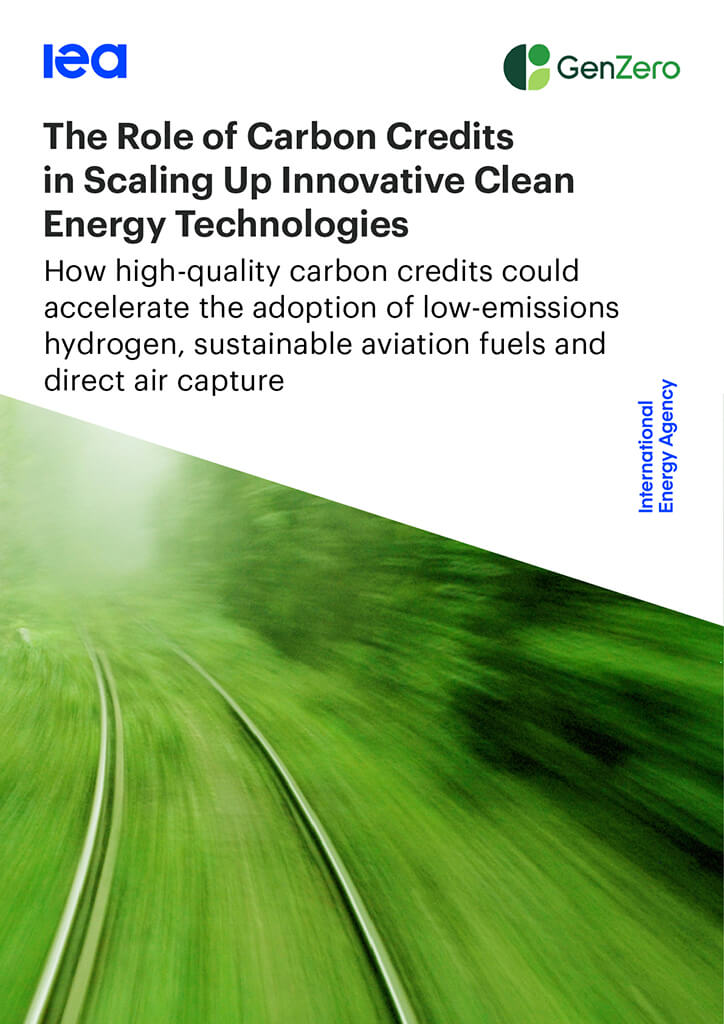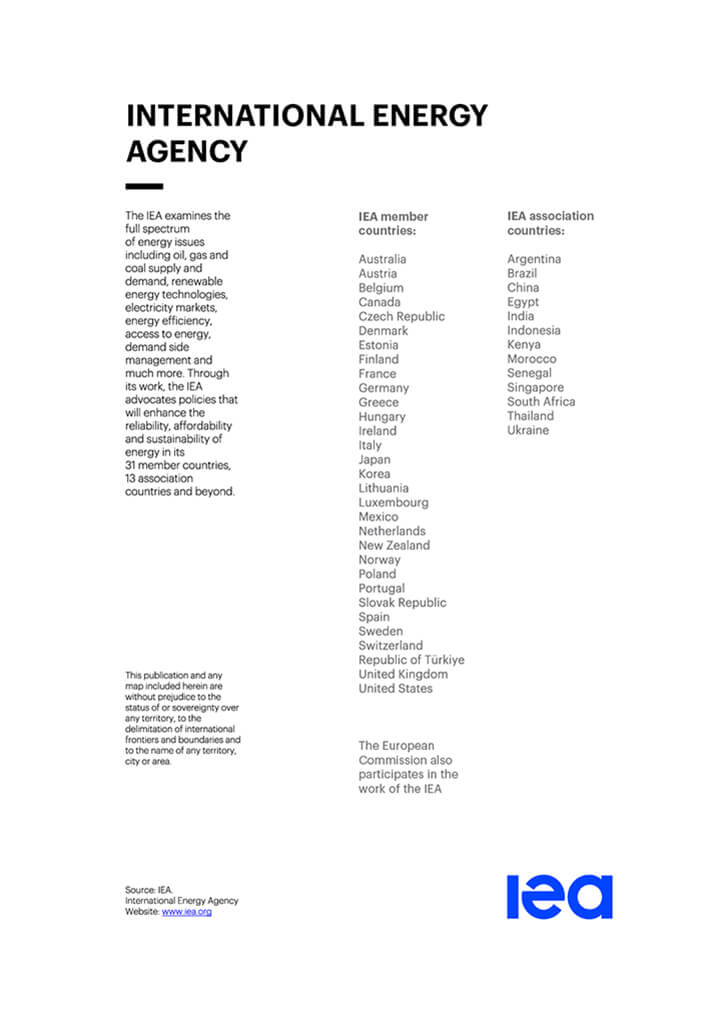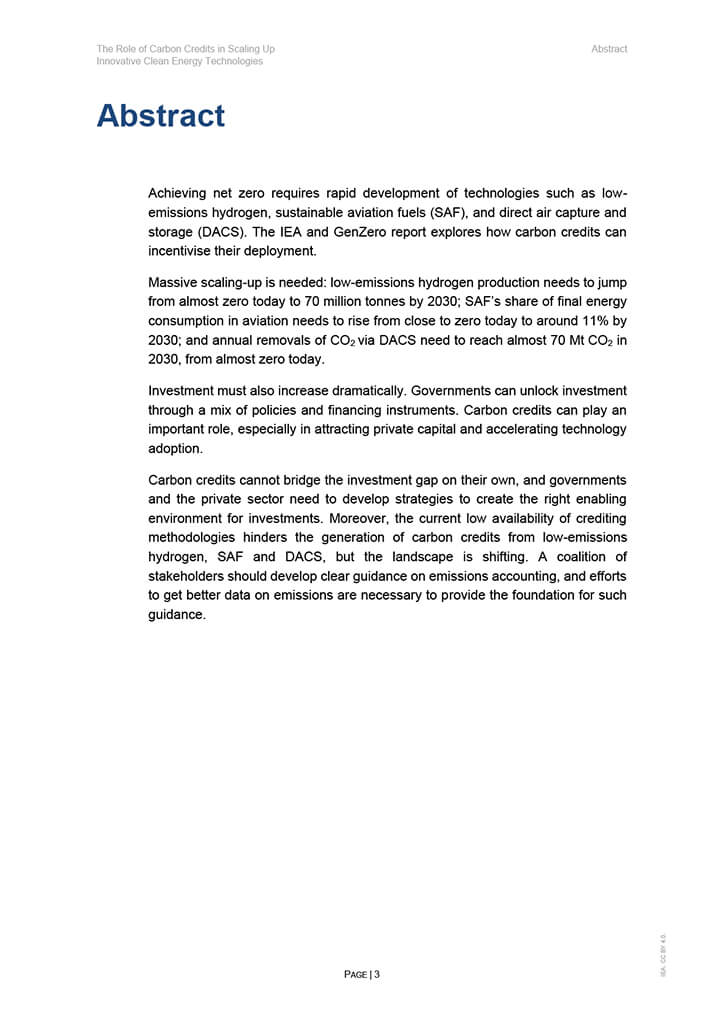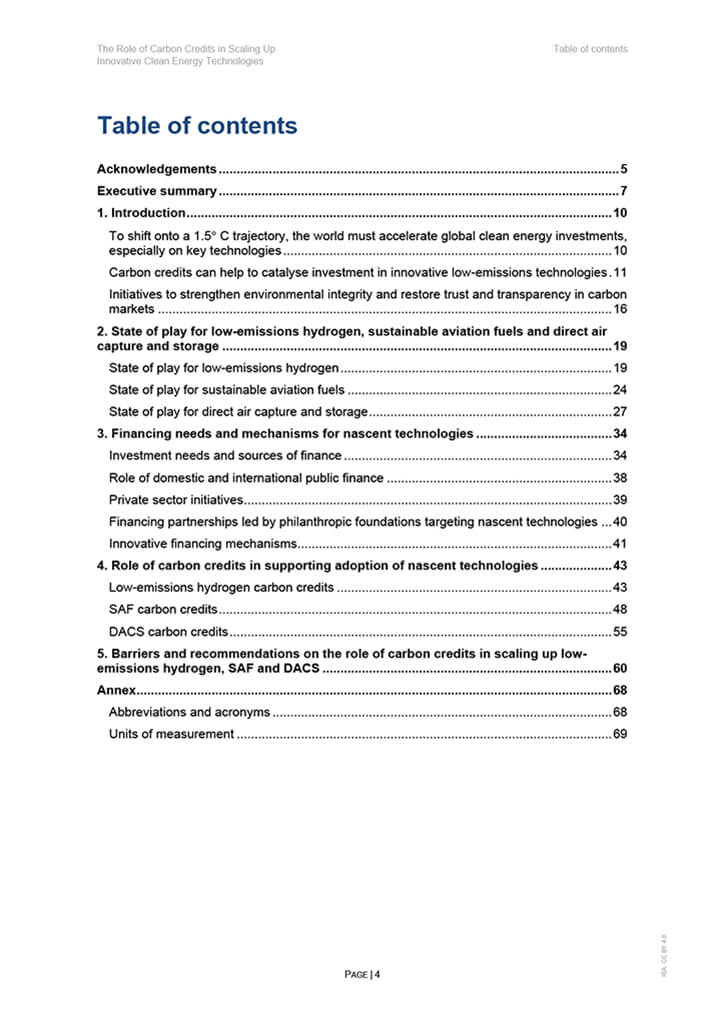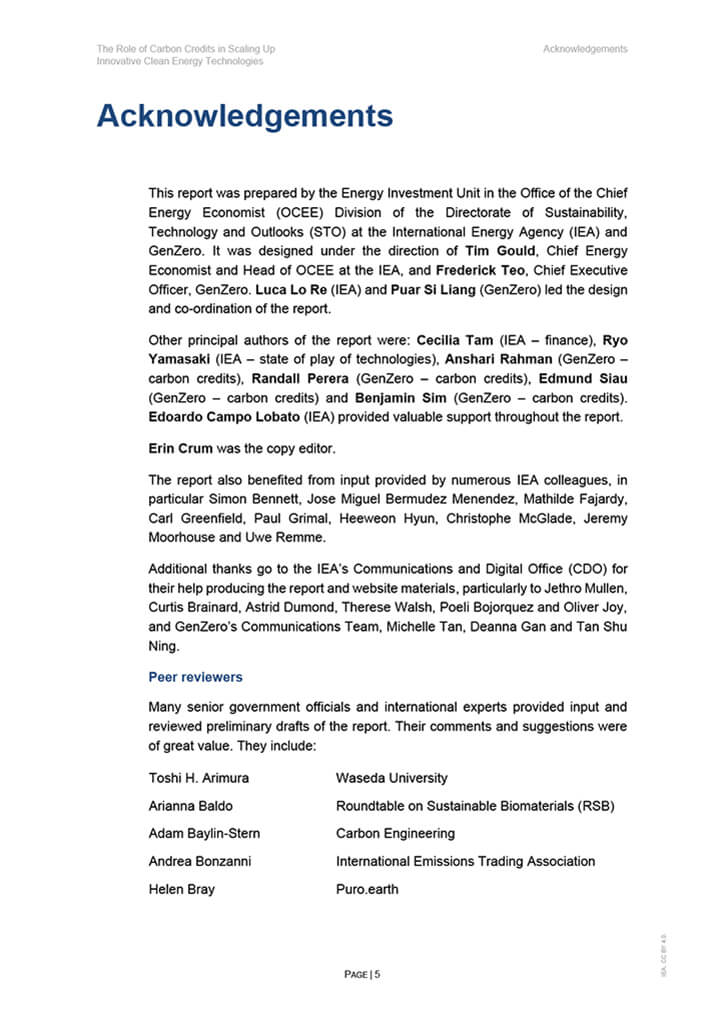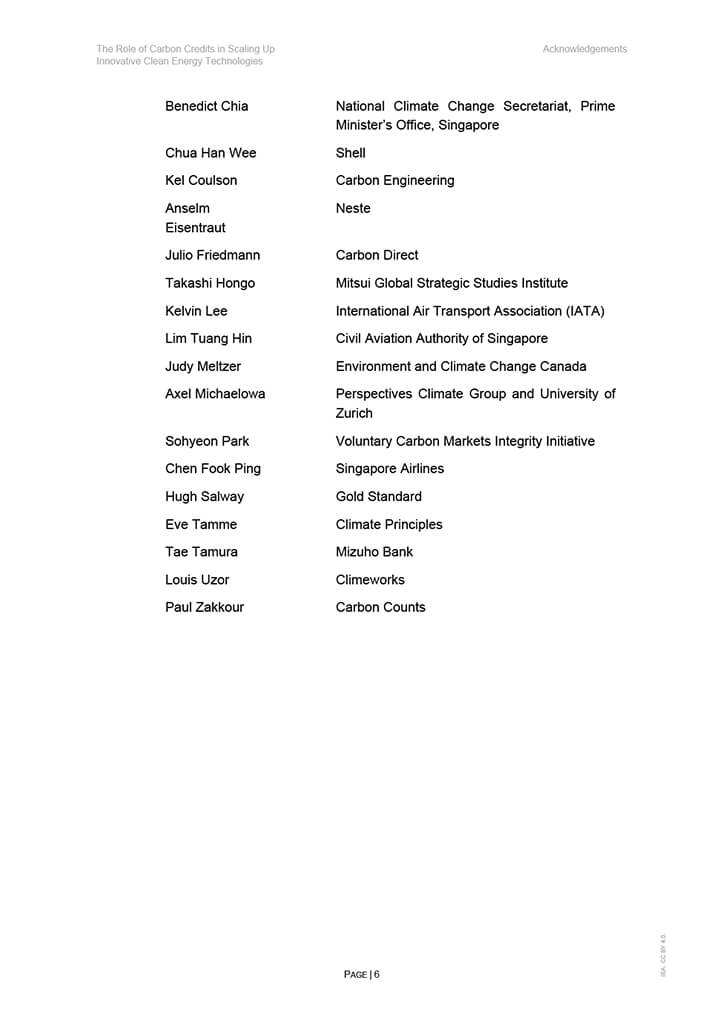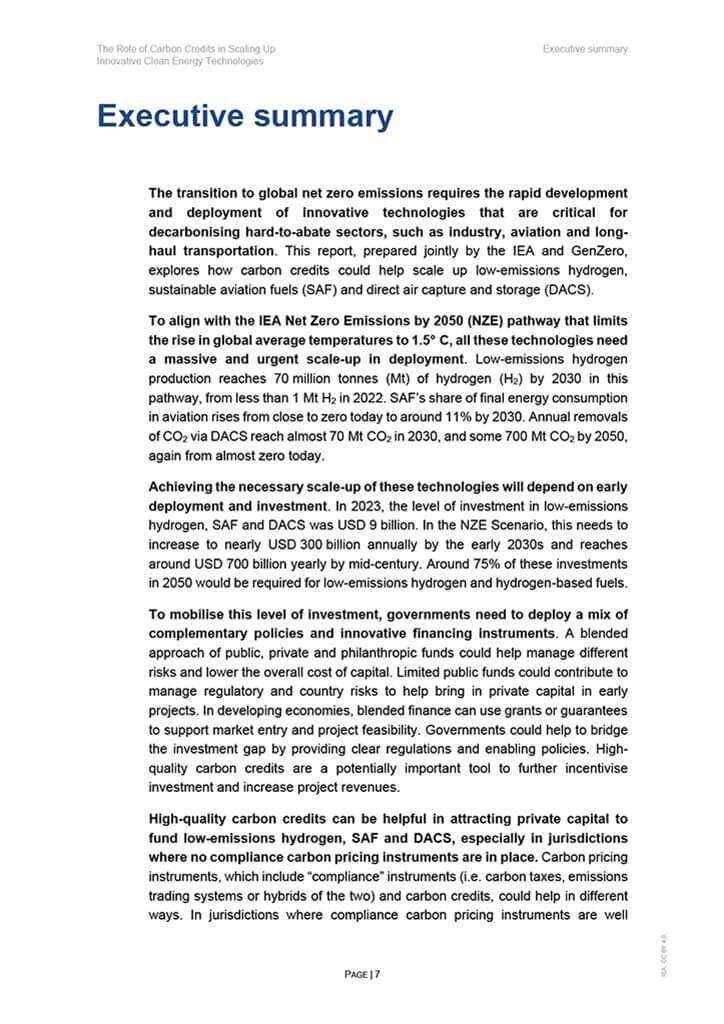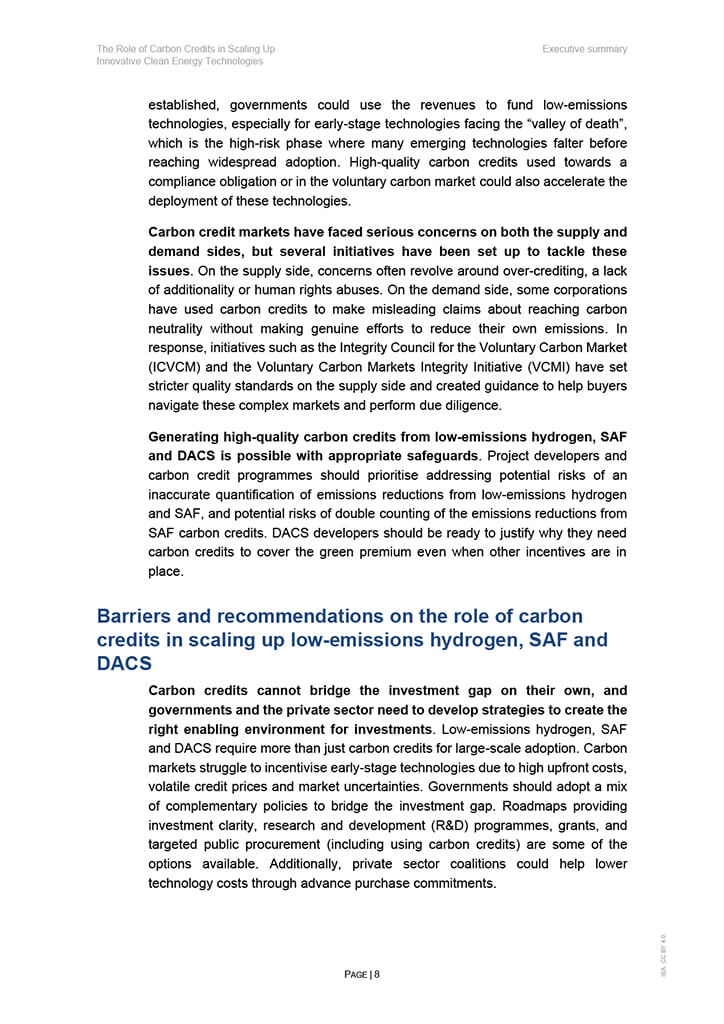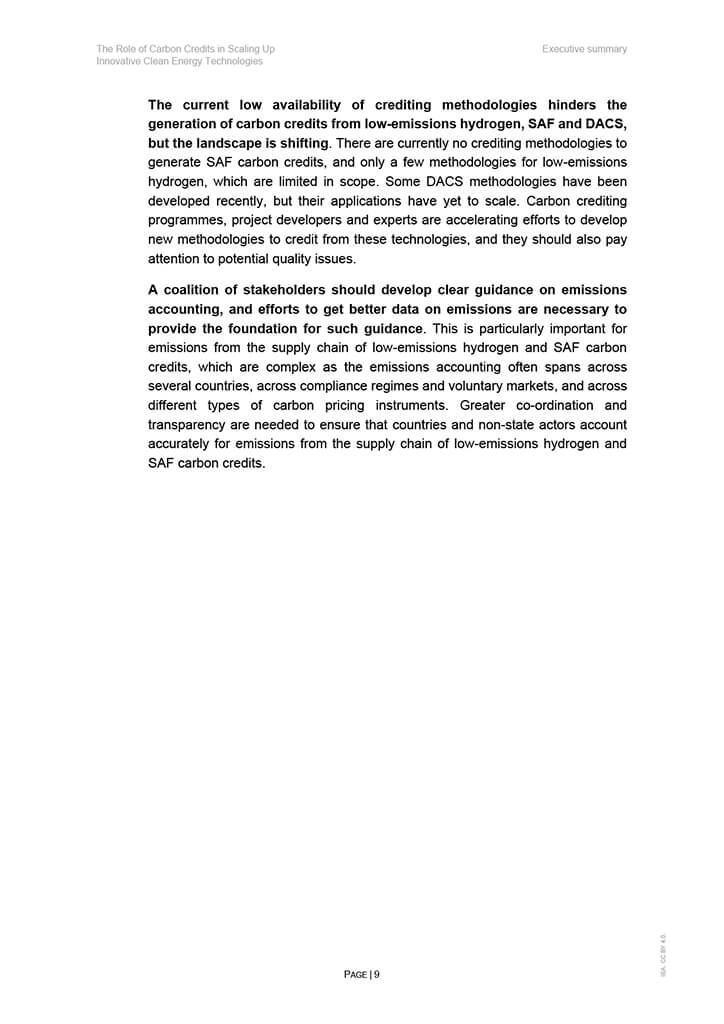By Frederick Teo, Puar Si Liang, Tim Gould and Luca Lo Re
Innovative technologies like low-emissions hydrogen, sustainable aviation fuels (SAF), and direct air capture and storage (DACS) hold immense potential to decarbonise hard-to-abate sectors. However, to realise the IEA Net Zero Emissions by 2050 (NZE) and limit global warming to 1.5° C, these technologies require a massive and urgent acceleration in deployment by orders of magnitude.
The significant scale-up of these technologies hinges on early deployment and investment. In 2023, the level of investment in low-emissions hydrogen, SAF, and DACS was USD 8.5 billion. To fulfill the NZE Scenario, this number must grow to nearly USD 300 billion per year by the early 2030s and reach around USD 700 billion per year by mid-century.
Mobilising this level of investment would require support from governments to deploy a mix of complementary policies and innovative financing instruments. High-quality carbon credits can be a tool to help close the investment gap by attracting private capital to fund low-emissions hydrogen, SAF and DACS, especially in jurisdictions where no compliance carbon pricing instruments are in place.
Generating high-quality carbon credits from low-emissions hydrogen, SAF and DACS is possible with appropriate safeguards. To enable this, the report recommends that:
- Government and private sector develop strategies to create the right enabling environment to drive investments, as carbon credits cannot bridge the investment gap on its own
- Carbon crediting programmes, project developers and experts accelerate the development of methodologies. The lack of crediting methodologies hinders the generation of carbon credits from low-emissions hydrogen, SAF and DACS
- A coalition of stakeholders develop guidance on emissions accounting for low-emissions hydrogen and SAF carbon credits, as they have complex supply chains that span several countries and markets. To support the guidance, better data on emissions will be needed
The transition towards global net zero emissions requires the rapid development and deployment of innovative technologies that are critical for decarbonising hard-to-abate sectors, such as industry, aviation and long-haul transportation. This report, prepared jointly by the IEA and GenZero, explores how carbon credits could help scale up low-emissions hydrogen, SAF and DACS.
Acknowledgments
This report is jointly prepared by the Energy Investment Unit in the Office of the Chief Energy Economist (OCEE) Division of the Directorate of Sustainability, Technology and Outlooks (STO) at the International Energy Agency (IEA) and GenZero. The authors are grateful to the many senior government officials and international experts who have provided their input for this report. Their contributions offered significant value to the report.
© Carbon Solutions Platform Pte. Ltd. All Rights Reserved.
The companies in which Carbon Solutions Platform Pte. Ltd. directly and indirectly owns investments are separate legal entities. In this article and presentation, “GenZero” is sometimes used for convenience where references are made to Carbon Solutions Platform Pte. Ltd. and its subsidiaries in general.


